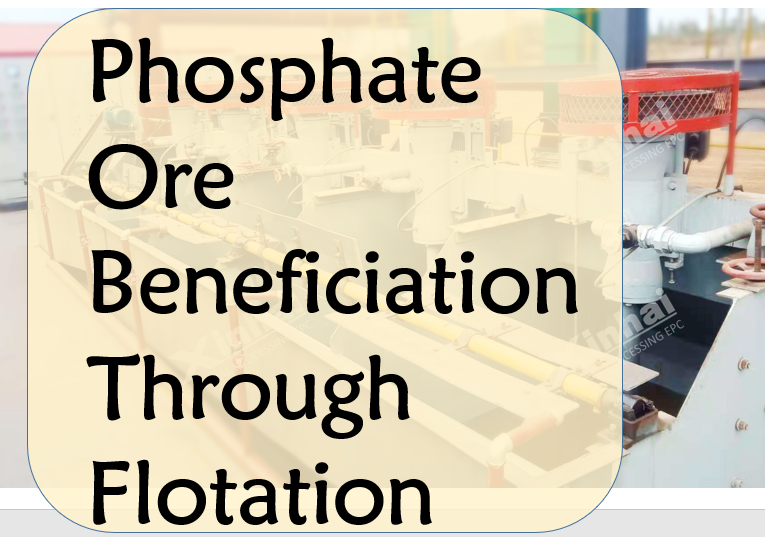Phosphate Ore Beneficiation through Flotation: A Comprehensive Technological Review
2024-07-24 Xinhai (1632)
2024-07-24 Xinhai (1632)
If you have any questions, please contact us through the following ways, we will give you more and better assistance!

Introduction
Phosphate ore, a critical component in the agricultural and industrial sectors for the production of fertilizers and phosphoric acid, undergoes a meticulous beneficiation process to unlock its full potential. Flotation, standing as a cornerstone of mineral processing technology, is instrumental in selectively enriching phosphate ores and separating them from associated impurities. This article provides an in-depth look at the flotation process, detailing the machinery and chemicals that contribute to the transformation of phosphate ores into valuable resources.
Flotation is a physicochemical process that selectively separates minerals based on their surface properties. In the context of phosphate ore, the process aims to separate phosphate minerals from impurities, such as silica, iron, and alumina.
1. Crushing and Grinding
The journey begins with the size reduction of the phosphate ore in crushers and grinding mills. This step is essential for exposing the valuable minerals and making them accessible for the subsequent flotation process.
2. Conditioning
The ground ore is conditioned in a slurry with specific pH levels, which is achieved by adding pH adjusters. This step is vital for the activation or deactivation of certain minerals, preparing them for selective flotation.

Equipment Used
Grinding Mills: These reduce the ore to a fine particle size, increasing the surface area for chemical interaction.
Conditioning Tanks: Vessels where the ore slurry is mixed with reagents to prepare it for flotation.
Flotation Cells: The heart of the flotation process, where the separation of minerals occurs through the introduction of air and the formation of mineral-laden bubbles.
Reagents in Phosphate Flotation
Collectors: These are typically fatty acids or their salts, which adsorb onto the surface of phosphate minerals, increasing their hydrophobicity and facilitating their attachment to air bubbles.
Frothers: Used to stabilize the foam and improve the bubble formation, common frothers include pine oil and methyl isobutyl carbinol (MIBC).
P pH Modifiers: To adjust the slurry pH, which influences the flotation response, lime or sulfuric acid is often used.
Inhibitors: These are used to prevent the flotation of unwanted minerals, thereby improving the selectivity of the process.
3. Flotation
The conditioned slurry is fed into the flotation cells where collectors are added to promote the attachment of phosphate minerals to air bubbles. Frothers are introduced to stabilize the foam, and air is injected to create bubbles that carry the phosphate minerals to the surface.
4. Separation and Collection
The mineral-laden foam, known as the concentrate, is removed from the flotation cell and further processed, while the remaining slurry, called the tailings, is either discarded or further treated.
5. Dewatering and Drying
The concentrate is dewatered to remove excess moisture and then dried to produce a dry, marketable product.
Conclusion
The phosphate flotation process is a sophisticated sequence of physical and chemical treatments aimed at maximizing the recovery of phosphate minerals. With the right equipment and reagents, it is possible to transform raw phosphate ore into a high-value commodity, supporting the global demand for phosphate-based products.
By understanding and optimizing each step of the flotation process, the phosphate industry can continue to provide essential resources for agriculture and industry while minimizing environmental impact. As technology advances, the flotation process will undoubtedly become more efficient and sustainable, ensuring the longevity of phosphate ore as a critical resource.